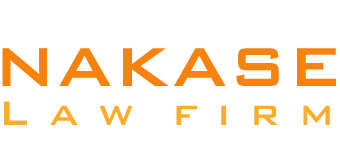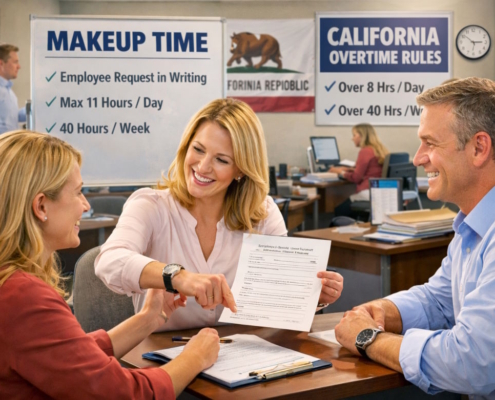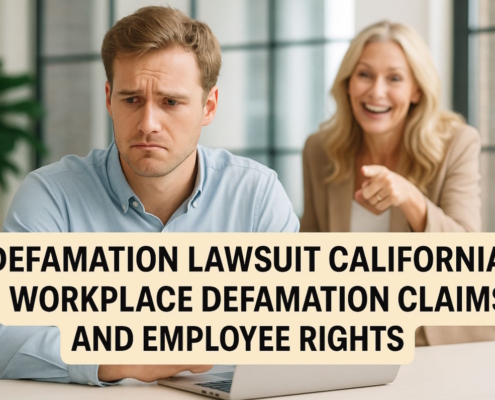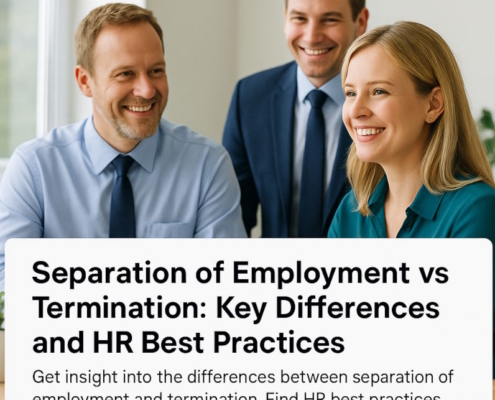Equal Pay Act: What is it?
Men and women must be paid equally for doing comparable jobs at the same establishment, according to the Equal Pay Act. It was enacted in 1963. While they need to be almost equal, the jobs don’t have to be the same. Employers are prohibited by the EPA from paying men and women differently for positions that involve essentially the same level of ability, effort, and accountability under comparable conditions of employment in the same business. The content of a job is more important than its title. Differences in pay are acceptable if they are founded on rank, experience, or the volume or caliber of output.
What Equal Pay Act rights do I have?
Irrespective of your gender, you have a right to equal compensation for equal work according to the EPA. This law applies to all types of compensation, including:
- Salary
- Bonuses
- Overtime Pay
- Stock Options
- Bonus Plans and Profit Sharing
- Life Insurance
- Holiday and Vacation Pay
- Gasoline or Cleaning Allowances
- Accommodations in Hotels
- Travel Expenses Reimbursements
- Benefits
Employers are required to increase compensation to close any gender wage disparity. They are unable to lower either person’s pay.
What must I demonstrate in a lawsuit alleging pay discrimination?
You must demonstrate in Equal Pay Act cases and settlements that you are paid less than your male coworkers despite the fact that your jobs require the same amount of:
- Skill: Determined by elements including the education, training, experience, and skills needed to do the job. This concerns the talents needed for the profession, not the abilities of individual workers. For example, since an advanced degree in historical art is not necessary for the position, two accountants may be regarded as equal according to the EPA, irrespective of whether one of them holds one.
- Effort: The level of mental/physical effort put into completing the task. Take an example. Two salesmen at a shop selling electronics are both in charge of making sales, but one of them must assist clients in carrying bulky things to their cars. Because of the increased physical demands of their effort/work, this person should be paid extra.
- Responsibility: The level of responsibility needed to do the task. For example, suppose that one of the two supervisors of a coffee shop is in charge of making weekly schedules for workers and collecting inventory. This manager might make more money since they have greater responsibilities. A small job/responsibility like shutting off the store’s lights is not sufficient to excuse a pay disparity.
Which sectors/industries witness the most cases of wage discrimination?
Although compensation disparities between male & female employees are common in the following sectors, wage discrimination can happen in any industry:
- Agriculture
- Maintenance & Repair
- Installation
- Industrial Work
- Office Management
- Construction
- Sales
- Financial and Business Operations
- Transportation
- Security & Protective Services
- Natural & Social Sciences
- Education
- Information and Computer Technology
Have cases involving wage discrimination been effective in the past?
Yes, there have been numerous examples of Equal Pay Act cases and settlements in the past. Let us go through some of them.
Equal Pay Act cases and settlements: Example 1
In a lawsuit alleging they were paid less than their male counterparts, a group of female retail managers won $45 million against Family Dollar. The class action judgment was approved by a federal judge. Title VII (1964 Civil Rights Act) and the Equal Pay Act were the legal grounds for the pay discrimination charges.
Case Background
The Equal Employment Opportunity Commission received complaints of discrimination from almost 50 female supervisors of Family Dollar stores. They suspected that they were receiving lower compensation from the corporation than male managers in comparable positions. Over the following ten years, the plaintiffs’ claim was “fervently litigated” in federal court.
One of the disputed issues was whether or not the class action was allowed to continue in view of the Supreme Court’s landmark decision on class action matters in the 2011 Walmart v. Dukes case. After both sides eventually came to an understanding on settlement in 2017, the court held a hearing and on 14th March 2018, approved the settlement.
Relief provided by the settlement contract
The settlement stipulates that a total of $45 million will be awarded to the affected female managers of the Family Dollar store. Under the court-appointed compensation administrator, the funds will be disbursed to the class members. In addition to the approximately a million dollars in legal costs, the class’s lawyers will get one-third of this sum, or $15 million. Family Dollar must also, among other tasks, review its store manager remuneration policies and seek advice from labor economists throughout the process.
The relationship between EPA and Title VII in charges of wage discrimination
The Equal Pay Act & Title VII (1964 Civil Rights Act) are two important federal regulations. They guarantee that female employees receive the same compensation as men when they are doing similar work. Wage discrimination is covered by both acts, but there are some important distinctions. You should be aware of them because they may significantly affect your case. These differences are relevant in both glass ceiling cases of prejudice and standard gender wage discrimination claims. While there are many parallels between the EPA and Title VII, there are also some significant differences that could impact your possible case (all of the following points presume the claim is made against an independent employer):
- According to the EPA, you must submit a charge for discrimination lawsuit (Title VII), but you are not obliged to file a Charge of Discrimination (EEOC) before appearing in court.
- While a Title VII wage discrimination accusation must be submitted to the EEOC within 300 or 180 days (depending on the state in which you reside), an EPA case must be filed within 2 years of the unfair pay conduct (or three years if the infraction is willful).
- In contrast to EPA, Title VII does not require you to demonstrate that your position is substantially equivalent to that of a male worker with a greater salary or to be employed in the same place as the male counterpart.
- In an EPA complaint, the company will have to prove its EPA response (seniority structure, merit framework, production-quota rule, or any other factor except sex), not only prove it, like in a claim via Title VII.
- Liquidated compensation may be awarded if you can demonstrate that your employer willfully broke the EPA.
- The EPA only addresses gender-based inequalities, but anti-discrimination protections of Title VII cover broader categories (race, gender, religion, etc.).
Equal Pay Act cases and settlements: Example 2
Activision Blizzard was sued by the Civil Rights Department for failing to compensate women in California who performed work that was largely comparable to that of their male counterparts for five years, from 12th October 2015 to 31st December 2020.
The lawsuit also asserted that throughout that period, women experienced extra discrimination based on their gender and declined opportunities for promotions.
The CRD believed that the claimed behavior was unlawful. The government filed a lawsuit against Activision Blizzard, claiming that the company had violated the state’s Fair Employment and Housing Act and Equal Pay Act.
Settlement of Fair Equal Pay
A press release issued on 15th December stated that the CRD & Activision Blizzard had reached a settlement to terminate the litigation. If the deal is approved by the judiciary, Activision Blizzard is going to:
- Pay about $54,875,000 to fund legal expenses and worker relief. About $45,750,000 of it will go into a reparations fund that will be used to pay impacted employees.
- Any extra money should be donated to organizations that support women in the technology and video game industries and/or raise awareness of workplace gender equality.
- Employ a third-party consultant to examine and assess the organization’s promotion and pay practices and offer suggestions on its training resources.
- Maintain its DEI initiatives to incorporate eligible applicants from marginalized groups.
Equal Pay Act cases and settlements: Example 3
A move for initial authorization of a $43.25 million compensation in a gender wage discrimination class action was filed by class representatives representing current and past female employees of specific Disney-affiliated enterprises in California.
In their 2019 lawsuit, the women alleged that Disney had denied the class millions of dollars in wages. The female employees argued that Disney’s actions violated the Equal Pay Act and the Fair Employment and Housing Act of California because it paid women less than men for tasks that were essentially identical and because its compensation policies had a discriminatory impact on women. In 2023, the EPA class received its certification.
The plaintiffs asserted, among other matters, that before 2018, Disney had an enterprise-wide wage structure that, in part, would base initial wages on previous salary, which traditionally includes gender-based inequalities, and thus started new female employees at lower wages than the male applicants for similar jobs. While Disney contested that study, the plaintiffs based their arguments on a labor economist’s public assessment that was submitted to the judge in 2023 at the stage of class certification.
Disney consented to pay an independent industrial advisor to train employees on standards for structuring jobs within its job architecture and benchmarking occupations to outside market information as part of the agreement. Additionally, Disney has committed to hiring a labor economics consultant for the period of three years to use the Plaintiff’s expert’s framework to conduct a pay equity evaluation of all permanent, non-union California workers below the vice president level and to remedy any statistically noteworthy pay disparities that are discovered.
Without these brave women, this resolution would not have been achieved. Women can anticipate fair treatment at Disney going forward. The judge acted quickly and sanctioned the compensation to these diligent ladies.
With its headquarters in Burbank, California, Disney runs amusement parks, hotel chains, media production companies, broadcast channels, publishing houses, and other consumer businesses all over the world.
Among the plaintiffs are women who worked in California between 1st April 2015 and 28th December 2024 in salaried, non-union positions with specific positions and below the rank of vice president.































